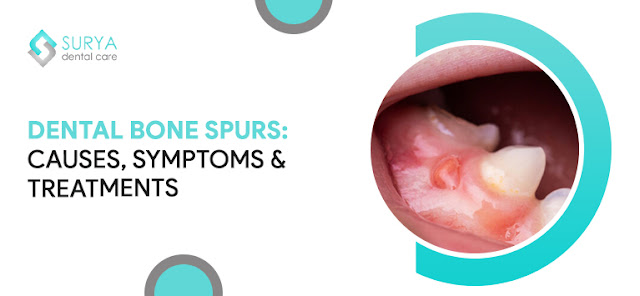Dental Bone Spurs | Bone Spicule | Gum Bone Spurs | Bony Lump On Gums
Experiencing discomfort or pain in your mouth possibly due to a dental bone spur? Look no further! This blog post will explore everything you need to know about dental bone spurs – from causes and symptoms to treatment options and prevention methods. Stay informed and discover insights to alleviate concerns and find relief. Continue reading to uncover the latest news and updates on dental bone spurs to better care for your oral health.
What are Dental Bone Spurs?
Dental bone spurs, also known as exostosis, are common conditions characterized by small bony lump on gums. These bone spurs, or bone spicules, can develop due to various factors like trauma, infection, or excessive pressure on the jaw. While often harmless, they may occasionally cause discomfort or irritation in the mouth.
Symptoms of Dental Bone Spurs
- Discomfort or pain in the affected area.
- Swelling and tenderness around the gum line.
- Difficulty chewing or irritation while brushing teeth.
Causes of Dental Bone Spurs
Various factors can contribute to the development of dental bone spurs:
1. Bone spur after tooth extraction: Following tooth extraction, gum bone spurs may form as part of the body's natural healing process. While usually small and not concerning, they might cause discomfort.
2. Improper post-extraction care: Infections or inadequate oral hygiene after extraction can disrupt healing and lead to abnormal bone growth.
3. Pre-existing conditions: Conditions like periodontal disease or gum infections may increase the risk of bone spur development post-extraction.
4. Anatomical factors: Thin jawbones or irregular tooth placement can predispose individuals to bone spur formation after extractions due to pressure exertion during the procedure.
How to Get Rid of Bone Spurs After Tooth Extraction
- Rinse your mouth with warm salt water.
- Apply ice to reduce swelling and avoid touching the affected area.
- Stick to soft foods and maintain good oral hygiene.
- Consult your dentist if the bone spur persists or causes discomfort.
Treatment Options for Dental Bone Spurs
- Surgery performed by a dentist to remove the bone spur.
- Application of topical oral gels or creams to soothe discomfort and reduce inflammation.
- Prescription of pain medications if necessary.
Remember to consult a dentist for an accurate diagnosis and personalized treatment plan.
Lifestyle to Follow & Avoid To manage dental gum bone spurs effectively:
Follow:
- Maintain good oral hygiene.
- Use a soft-bristled toothbrush.
- Rinse with salt water or mouthwash.
- Seek professional diagnosis and treatment.
Avoid:
- Attempting to remove the bone spur yourself.
- Poking or prodding at the bony lump.
- Ignoring the issue, as it can lead to complications.
Final Thoughts
If you're experiencing bone spicule, seek professional dental care promptly. Our experienced dentists are here to provide effective treatment tailored to your needs. Contact our dental office today to schedule an appointment and take the first step towards a healthier, pain-free smile. Your oral health is our priority.
For More Info Please Visit: https://www.suryadentalcare.com/dental-bone-spurs/




Comments
Post a Comment